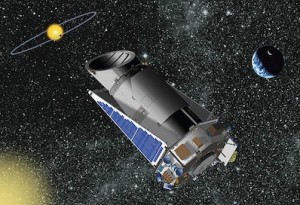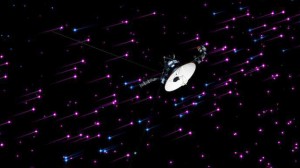What Next for Disabled Kepler Space Telescope?
This is the exact question NASA’s scientists are asking themselves after engineers were unable to restore its damaged two wheels. They scientists are now on a mission to find a new mission for the probe.

Problems started in May 2013 when two reaction wheels failed due to friction. Engineers tried to bring the wheels back to life in vain.
Now that it can’t focus its three wheels to search for Earth size planets, a new use has to be found for it since its systems and cameras are still working perfectly.
It could focus on the exoplanets it has discovered so far or start looking for alien worlds, comets, asteroids and supernovas.
During its original mission, it discovered 135 confirmed exoplanets and 3500 planet candidates that require farther observations to confirm their existence.
Has Voyager 1 Finally Left the Solar System?
Controversy surrounds voyager 1’s location. Some astronomers believe it already left the solar system and entered interstellar space to begin exploring the Milky Way galaxy while some believe that it is still at the boundary where the sun’s influence begins to wane.
According to a University of Maryland team of scientists, Voyager 1 has left the solar system and entered interstellar space becoming the first manmade object to officially leave the solar system.
However, NASA and some other scientists believe the spacecraft is still in a transition zone between the solar system and the rest of the Milky Way galaxy.

Perseid Meteor Showers on the August Night Sky
August 12 and August 13 were the best days to view the annual Perseid meteor shower, a spectacular natural display of fireworks.
This shower originates from a radiant in the constellation of Perseus and is active every year from around 17 July to August 24 and is visible with the naked eye.
During this year’s Perseid meteor shower photographer Michael K. Chung and several others surprisingly captured a meteor explosion of a shock wave or debris ring on the early morning of August 12.
Mars Curiosity Rover Captures Phobos and Deimos Together
The Mars Science Laboratory aka Curiosity Rover captured the two moons of Mars together in the sky.
It captured about 41 images on August 1 when one moon eclipsed the other. The mission team used the images to create a time-lapse movie of the two moons.
This is the first time that the two moons have been imaged together from the Martian surface. The Mars Express Orbiter had captured them together from orbit.
